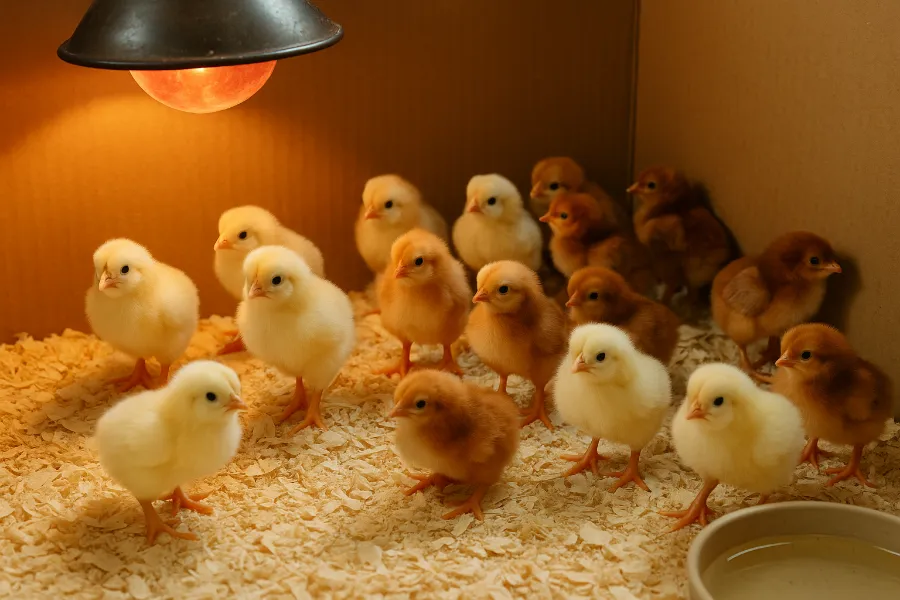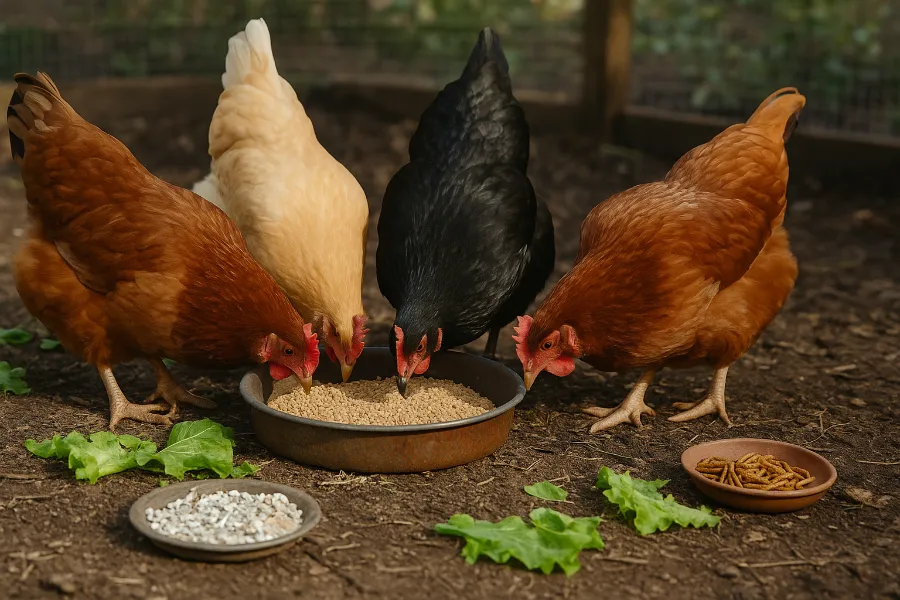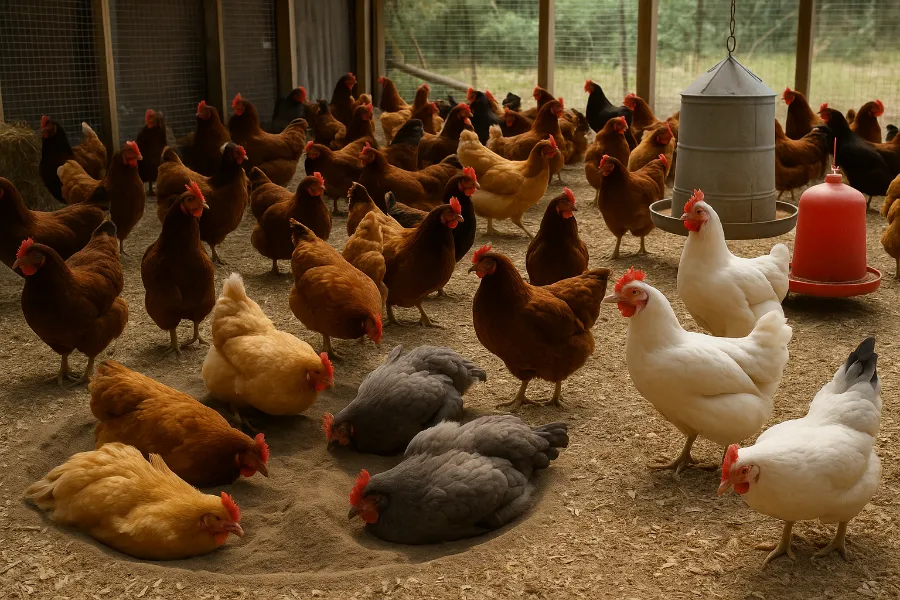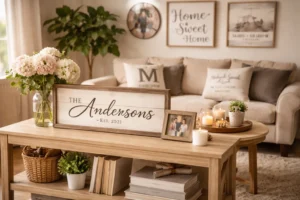I’ll be honest: ever since I started raising hens for eggs, it’s become one of my most fulfilling daily rituals. There’s something magical about waking up, gathering eggs still warm from the coop, and knowing exactly where each one came from. This is the story of my backyard nest—how I got started, what works (and what flops), and everything in between to help you feel right at home in the world of fresh eggs.

How to Raise Hens for Eggs
If you’re wondering how to raise hens for eggs, here’s how I began—and you can too. My first step was visiting the local feed store and bringing home a box of chirping chicks. Each little fluffball felt like instant family. To get them started right, I built a backyard chicken brooder for chicks using a simple cardboard box and a heat lamp setup. I followed a temperature chart for raising baby chicks week by week, keeping it at 95°F the first week and lowering it gradually as they feathered out. By six weeks, they were ready to explore outdoors—and so was I.
Choosing healthy chicks is key. Look for bright eyes and energy; that enthusiasm often carries through their lives. A clean brooder, fresh water, and enough space to move freely make all the difference during those fragile early weeks.
Coop Setup and Care
One of the smartest things I ever did was focus on simple chicken coop ventilation ideas for small coops. Proper airflow keeps the flock comfortable and prevents respiratory issues. I built vents near the roofline covered with mesh—one of the best predator proof chicken coop ventilation tips I’ve learned. During winter, I crack them just enough to let moisture escape, which helps with how to keep backyard chickens warm in winter without electricity. It’s all about balance: airflow without drafts, warmth without stuffiness.

Egg Production and Laying
When my hens started laying, it felt like a little miracle every morning. On average, each hen gave me about 4–5 eggs a week during their first year. I learned early on that natural ways to boost egg production in hens include good feed, consistent lighting, and a calm environment. When the days shortened, I realized why hens stop laying eggs in winter and how to fix it—a soft light on a timer extending daylight to 14 hours did wonders. And every morning, I made sure I knew how to collect and store backyard chicken eggs safely to keep them fresh and clean.
People often ask if you need a rooster for eggs, and the answer always makes folks smile: no, you don’t! Still, learning the difference between fertilized and unfertilized chicken eggs explained helped me understand what happens when roosters are around.
Feeding and Nutrition
Feeding hens properly is where health and productivity meet. Understanding how much feed a laying hen eats per day helped me manage costs while keeping everyone healthy. I rely on a high-protein layer feed and supplement it with garden greens and safe leftovers. For shell strength, I offer natural calcium sources for strong eggshells in hens like crushed oyster shells and recycled eggshells. During molting season, nothing excites them more than feeding mealworms to chickens during molting—those little protein-packed treats are pure joy for them.
When temperatures drop, I give a small scoop of corn before bedtime. Balancing cracked corn vs layer feed for chickens in cold weather is important, since corn adds warmth but shouldn’t replace proper nutrition. I also make a habit of sharing safe kitchen scraps you can feed backyard chickens—a fun way to reduce waste and keep their diet varied.

Flock Health and Maintenance
Every chicken keeper eventually learns that prevention beats cure. I stay alert to signs of illness, especially coccidiosis in backyard chickens naturally. Dry bedding, clean feeders, and spacing out the flock are my first line of defense. If symptoms ever appear, early treatment saves lives.
One of my favorite maintenance habits is using diatomaceous earth safely in chicken coops. A light dusting under bedding and in dust baths helps prevent mites. I’ve also experimented with the best bedding materials for chicken coops besides pine shavings—like hemp or straw—which can be softer and compost faster. Knowing how often to clean chicken coops for odor control keeps the air fresh and the flock happy.
For external pests, I lean on natural ways to control mites and lice in backyard chickens—herbal sprays, dust baths, and keeping everything dry. It’s simple, safe, and part of the natural rhythm of caring for hens.

Wrapping Up
So that’s my heart in chickens—my honest journey through all the joy, learning, and trial that comes with raising hens for eggs. From the day-old chicks to the first egg in the nesting box, every stage has its own magic. These birds teach patience and routine—and they reward you with breakfast straight from the backyard.
Whether you’re just starting to learn how to build a backyard chicken brooder for chicks, want to master natural ways to boost egg production in hens, or need help understanding natural ways to control mites and lice in backyard chickens, it all comes down to care, consistency, and curiosity. Life with hens is a simple kind of happiness that never gets old.
FAQs
Most beginners start with 4–6 hens. This provides enough eggs for a small family while keeping care manageable.
Peak laying happens in the first two years. After that, egg production gradually declines by about 15–20% each year.
No, hens lay eggs without a rooster. Roosters are only needed if you want fertilized eggs for hatching.
Pine shavings are absorbent, help control odor, and compost well. They’re also gentle on hens’ feet.
Keep bedding dry, avoid overcrowding, and provide clean water. Using medicated chick feed for young birds can also help.
Provide a balanced layer feed and extra calcium sources like oyster shells or crushed eggshells. This ensures strong, healthy shells.
Install vents near the roofline for airflow without drafts. Good ventilation reduces moisture, ammonia, and respiratory issues.













